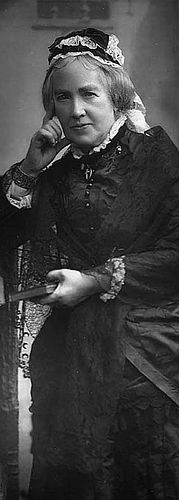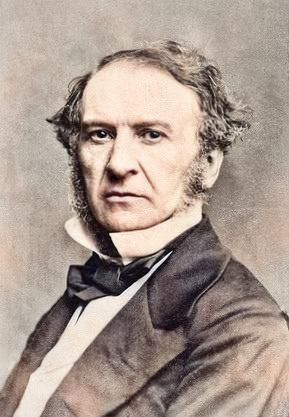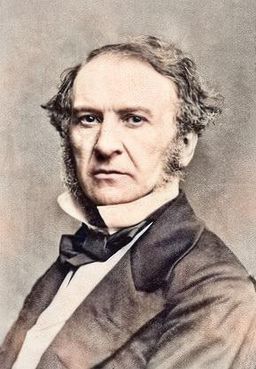
Catherine
Gladstone
Catherine Gladstone (née Glynne) was born on 6th January 1812, in the same year as Charles Dickens. She was the daughter of Sir Stephen Glynne, 8th Baronet, of Hawarden Castle, who died when she was only three, and was brought up, with her sister Mary, by her mother. It has been said that the Glynne sisters were very close and were renowned for their beauty. They married on the same day in Hawarden Church, and their families visited one another and holidayed together incessantly. When Mary died, as Lady Lyttelton, in 1857, Catherine acted in some ways as mother to her children.
Her brother Stephen succeeded to the baronetcy in 1815. On his death in 1874, the Glynne baronetcy became extinct and the estates passed to Catherine and William's eldest son, William Henry. It was through her brother Stephen, who represented Flint as a Liberal MP, that Catherine met William Gladstone, reputedly in 1834 in London. They were married on 25th July 1839 and lived at her ancestral home Hawarden Castle, in Flintshire, Wales.
When her brother’s ironworks failed Catherine and her family faced poverty. It was Gladstone’s financial skills that saved the family from bankruptcy. William relied on the support of his wife throughout his career. Catherine would run their household, offer political advice, and even sometimes act as his secretary, whilst raising their eight children. William greatly respected Catherine's opinion, and would write to her daily during their frequent periods apart. Their daughter Mary referred to them collectively as "The Great People". While the Queen and the PM loathed each other, they both loved Catherine. After a long and indecisive courtship, Gladstone said of his new wife that "my Cathie forever twinkles." Society remarked that her beauty showed a profound intelligence. Catherine loved being in the main stream of action but disliked politicians, fashion and social niceties. Unusual for the time Gladstone was present at the birth of each of their eight children and Catherine insisted on feeding them herself.
Mrs Gladstone’s primary concern was support of the poor – in particular those suffering from cholera, near-starving mill girls and homeless orphans. She established the concept of free convalescent homes and her common-sense influenced the Poor Laws. To maintain her genius for charity she took every opportunity to approach Gladstone’s friends for financial support for her good works. In addition, she found places for her husband’s ‘rescue’ women – young girls forced into prostitution as a result of poverty.
In 1866 Mrs Gladstone was involved daily in caring for the sick admitted to the London Hospital during a cholera outbreak. The numbers were such that patients had to be laid on the floor until a bed was vacated by death. Rather than send recovered, but weak patients back to their inadequate homes where they would be unable to look after themselves properly, Mrs Gladstone launched an appeal to raise funds for a convalescent home in the country. In the meantime she founded an orphanage in Clapton, where babies and children could be cared for after their parents had succumbed to the disease. If there was no place available for them, she frequently took recovered children and orphans home with her.
Catherine died on 14th June, 1900 and was buried alongside her husband at Westminster Abbey.
This website is committed to the works and memory of William Gladstone. It is an independent project. © Copyright. All rights reserved.

